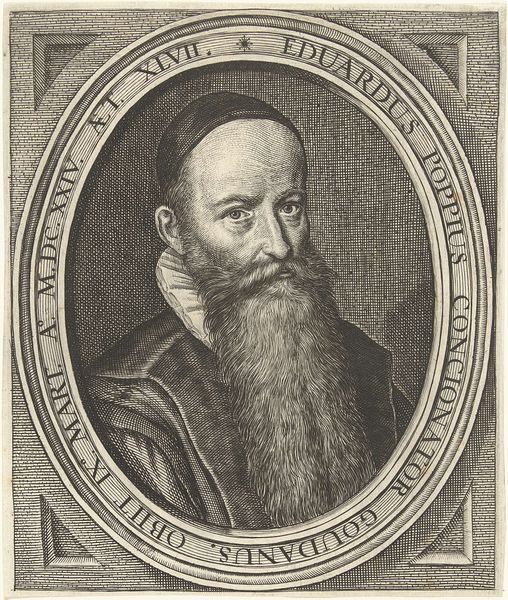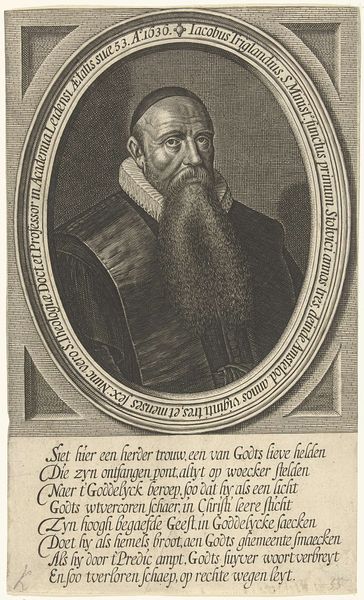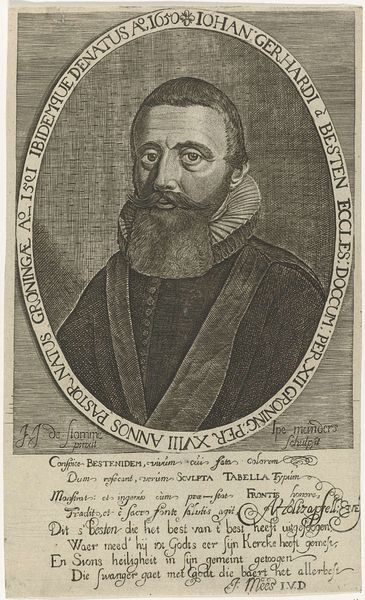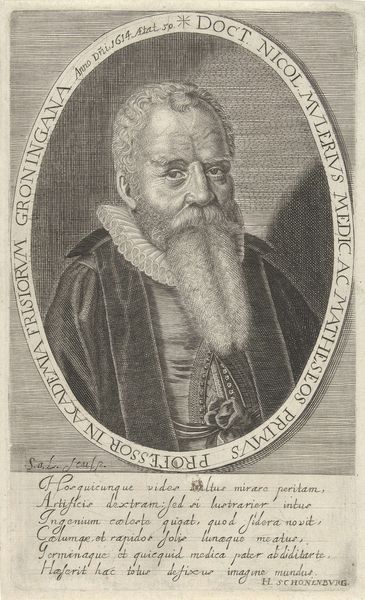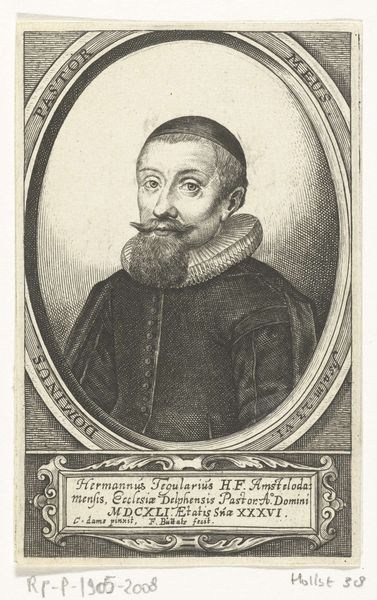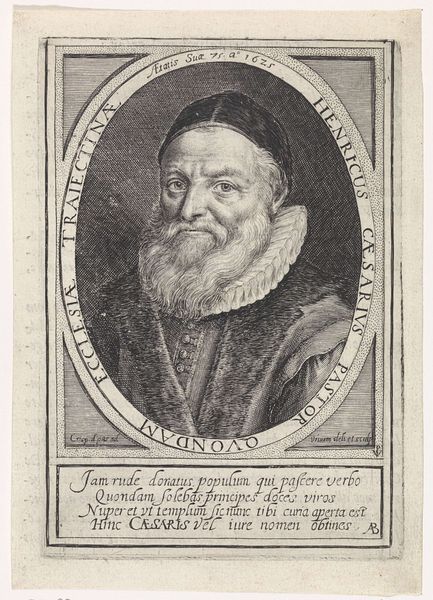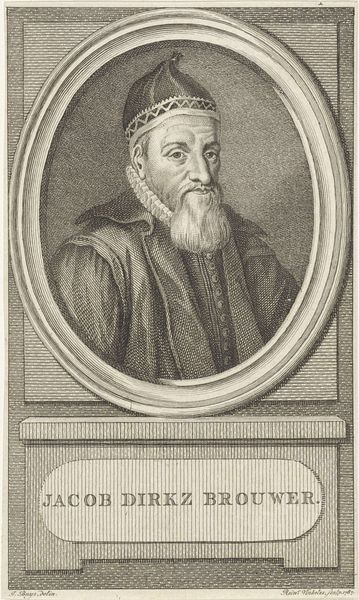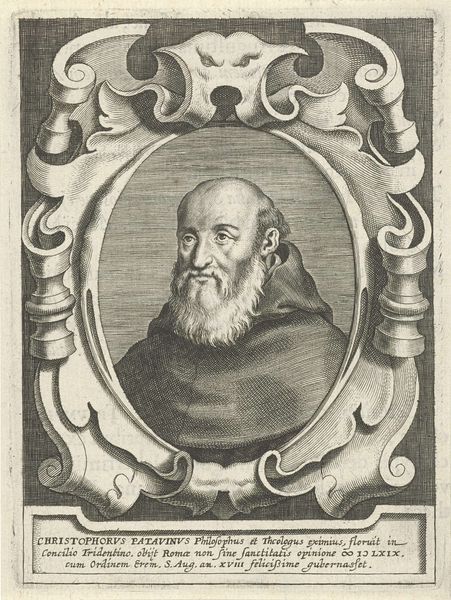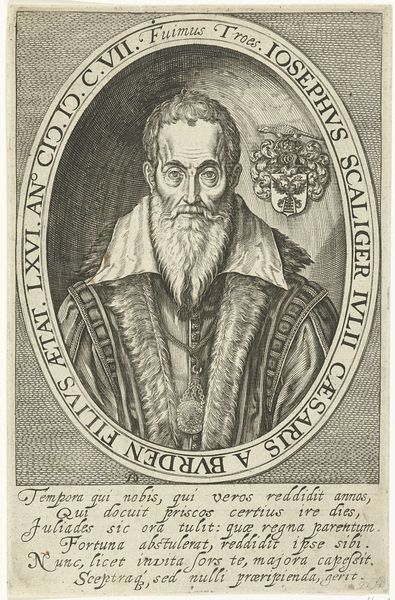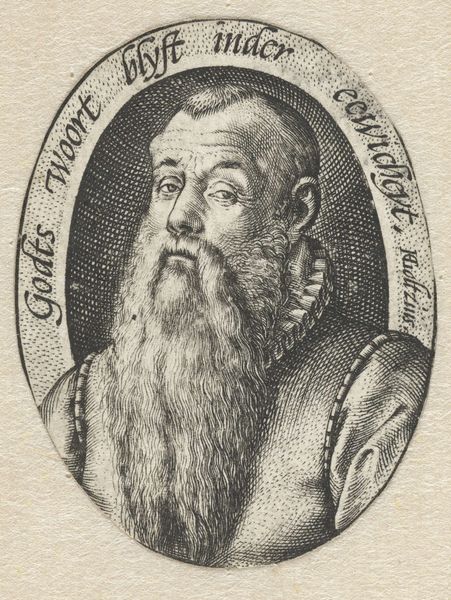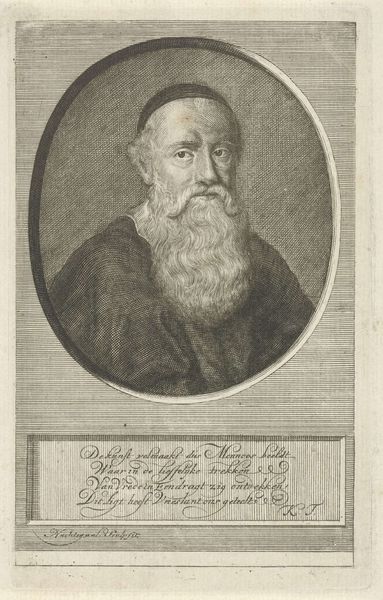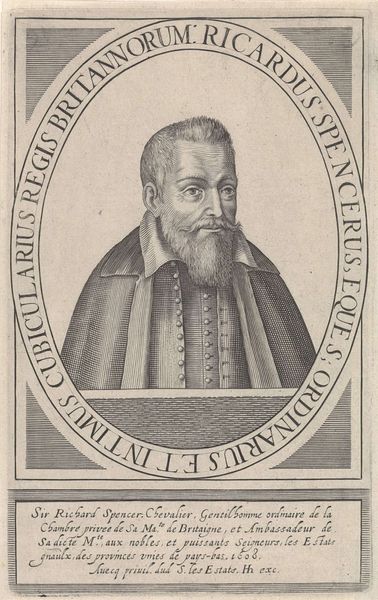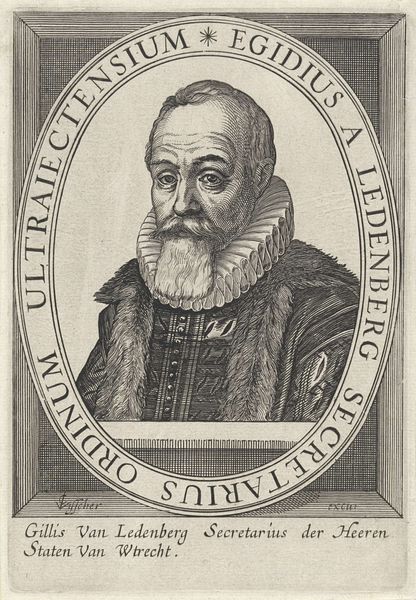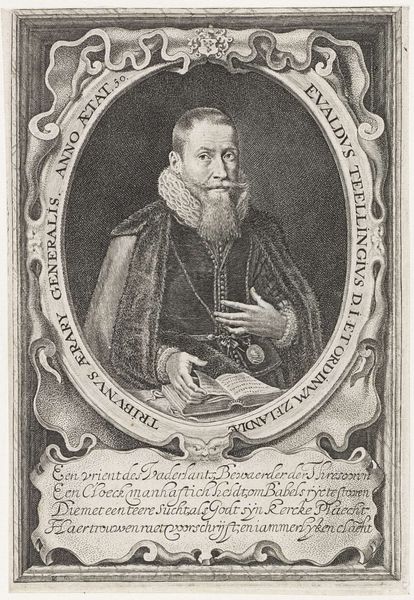
drawing, print, engraving
#
portrait
#
drawing
#
baroque
# print
#
portrait reference
#
engraving
Dimensions: height 152 mm, width 99 mm
Copyright: Rijks Museum: Open Domain
Curator: So, this is a print, "Portret van Henricus Schotanus" by Crispijn van de Passe II, made sometime between 1604 and 1670. The Rijksmuseum holds it. Editor: Right, the engraving shows a distinguished-looking man, framed in an oval. There’s such intricate detail in the beard and the inscription. What strikes me is how the material itself, the act of carving these lines into a plate, then pressing it, lends this such a formal air, almost an official pronouncement. What can you tell me about this? Curator: Well, let’s consider the labor involved. Engraving requires intense skill and time. Each line is carefully cut, each tone precisely calibrated. The very act of replicating the image using printmaking inherently democratizes image making while celebrating artisan craft. How do you think this process of making speaks to social ideas? Editor: Hmm… because prints can be reproduced, it allows wider circulation and ownership, challenging the idea of a unique art object only accessible to the elite. It brings knowledge and images to a broader audience. This means there's almost an industry built around creating these kinds of reproducible images and the materials used to print, as well as the process that allows for dissemination of such works... I see that it isn't about immortalizing Schotanus as an individual but also promoting legal academia. Curator: Precisely. Prints functioned as vital tools for disseminating information and solidifying reputations during this era, acting almost as early forms of propaganda, spreading certain concepts and reinforcing social standing, not necessarily for vanity's sake. What does it imply when considering the political and religious tensions during this period in the Netherlands? Editor: Given those tensions, disseminating controlled and 'safe' imagery was of utmost importance, wasn't it? Something to keep in mind… thank you! Curator: My pleasure. It’s fascinating to consider how the material conditions shape meaning.
Comments
No comments
Be the first to comment and join the conversation on the ultimate creative platform.
